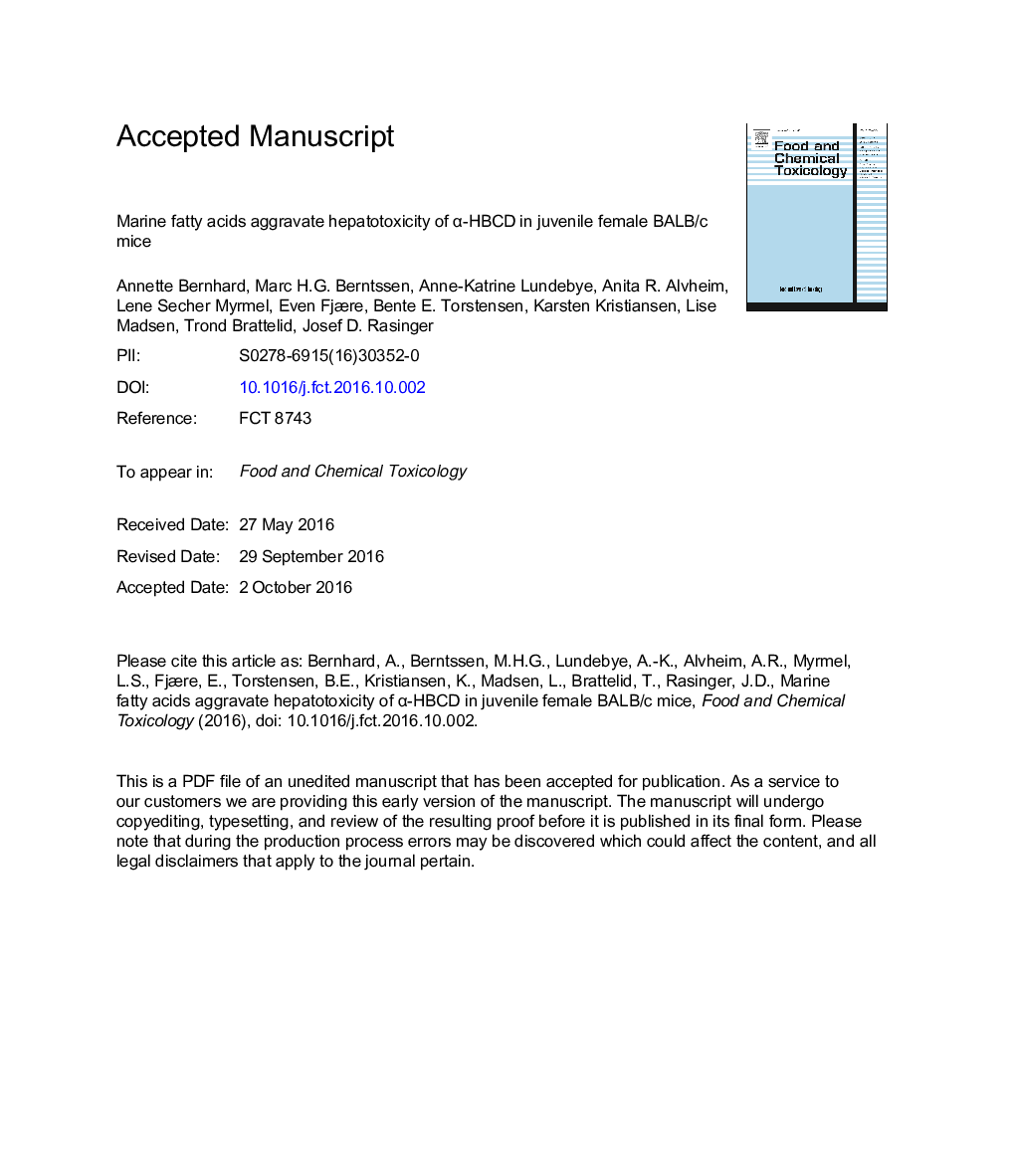| Article ID | Journal | Published Year | Pages | File Type |
|---|---|---|---|---|
| 8549392 | Food and Chemical Toxicology | 2016 | 37 Pages |
Abstract
Oily fish, a source of long-chain omega-3 polyunsaturated fatty acids (LC n-3 PUFAs), may contain persistent organic pollutants (POPs), including α-hexabromocyclododecane (α-HBCD). In experimental studies, marine LC n-3 PUFAs ameliorate fatty liver development while HBCD exposure was found to cause liver fatty acid (FA) changes. The present study investigated interactions of FAs and α-HBCD in juvenile female BALB/c mice using a factorial design. Mice (n = 48) were exposed for 28 days to a low (100 μg*kg body weight (BW)â1*dayâ1) or high dose (100 mg*kg BWâ1*dayâ1) of α-HBCD in diets with or without LC n-3 PUFAs. High dose α-HBCD affected whole body lipid metabolism leading to changes in body weight and composition, and pathological changes in hepatic histology, which surprisingly were aggravated by dietary LC n-3 PUFAs. Hepatic FA profiling and gene expression analysis indicated that the dietary modulation of the hepatotoxic response to the high dose of α-HBCD was associated with differential effects on FA β-oxidation. Our results suggest that in a juvenile mouse model, marine FAs accentuate hepatotoxic effects of high dose α-HBCD. This highlights that the background diet is a critical variable in the risk assessment of POPs and warrants further investigation of dietary mediated toxicity of food contaminants.
Related Topics
Life Sciences
Agricultural and Biological Sciences
Food Science
Authors
Annette Bernhard, Marc H.G. Berntssen, Anne-Katrine Lundebye, Anita Røyneberg Alvheim, Lene Secher Myrmel, Even Fjære, Bente E. Torstensen, Karsten Kristiansen, Lise Madsen, Trond Brattelid, Josef D. Rasinger,
